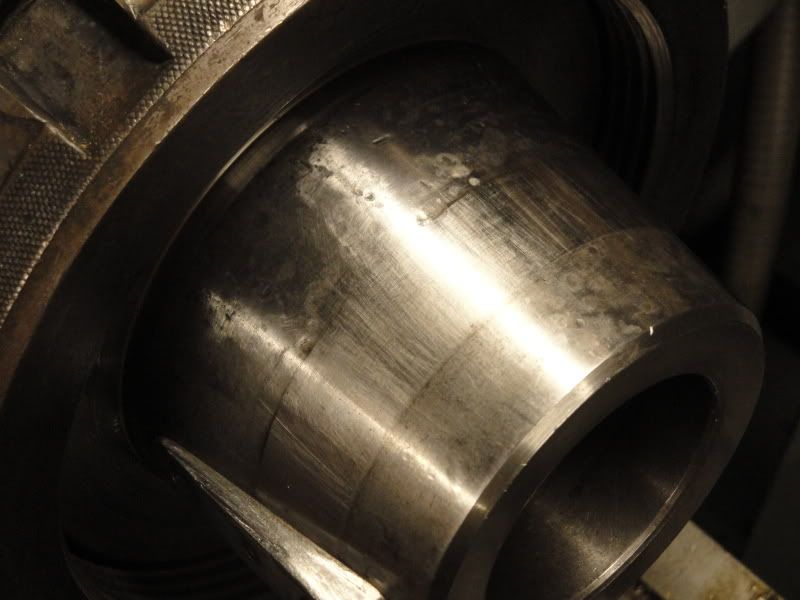ADrummond
Hot Rolled
- Joined
- Aug 18, 2003
- Location
- Portland, OR
I recently bought a Hardinge collet chuck for my Clausing Colchester 15x48, and when I took off the 3-jaw to install the new chuck (I haven't had the lathe long, and haven't taken it off before) I discovered the spindle nose was pretty hammered - like the previous owner never cleaned it before installing the chuck. There are dents and high spots all over, which makes me reluctant to simply stone the high spots and call it good. At the same time, I'm not too excited about turning it - because then I'd have to figure out what to do with the nut. At least I've figured out where some of the runout was coming from - but what to do about it? Any suggestions?
Also - according to at least one source (I haven't looked much), the L series taper angle is 8 deg 17 min 50 sec - maybe my math is bad, but that looks like 1.7317 in/ft. - real close to the square root of 3. Why? Am I missing something?
thanks,
Andrew

Also - according to at least one source (I haven't looked much), the L series taper angle is 8 deg 17 min 50 sec - maybe my math is bad, but that looks like 1.7317 in/ft. - real close to the square root of 3. Why? Am I missing something?
thanks,
Andrew



